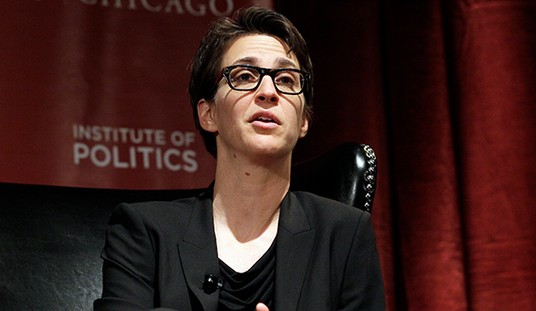Say, are you getting frustrated by long lines at the airport? Janet Napolitano wants you to know that the sequester is to blame for your woes. Following up on a more general warning she gave a week ago about the impact of the sequester, the DHS Secretary said yesterday that wait times had already gone up 150% to 200% at major airports, even if TSA didn’t show any unusual delays at all:
Secretary of Homeland Security Janet Napolitano on Monday cautioned airline passengers to get to the airport extra early because U.S. spending cuts have already led to long lines at some security checkpoints, and said the coming furloughs will only make the situation worse.
Napolitano said mandatory spending cuts ordered on Friday by President Barack Obama have led to the elimination of overtime for Transportation Security Administration officers and customs agents. She said TSA would begin sending out furlough notices to employees on Monday. Hiring freezes have also prevented any open positions from being filled.
“We are already seeing the effects at some of the ports of entry – at the big airports, for example. Some of them had very long lines this weekend,” Napolitano said at a “Politico Playbook” breakfast event.
She pointed to Chicago’s O’Hare International Airport, Los Angeles International Airport and Hartsfield-Jackson Atlanta International Airport as examples of those with long lines.
Napolitano said delays were between 150 percent and 200 percent at certain airports, although the TSA website did not show any major delays at any U.S. airport on Monday morning.
While you’re waiting in those longer lines that may or may not exist, you’ll have extra time to admire the new uniforms TSA bought just before the sequester hit. DHS signed a $50 million deal to buy uniforms just before the sequester hit, some of which will be made in Mexico:
The impending sequester did not prevent the Transportation Security Administration (TSA) from acting in late February to seal a $50-million deal to purchase new uniforms for its agents–uniforms that will be partly manufactured in Mexico.
Soon after this new investment in TSA uniforms, Homeland Security Secretary Janet Napolitano warned Americans that the lines are already lengthening at airports due to the sequester. …
On Feb. 27, the agency announced that on Feb. 22 it had awarded a one-year contract to VF Imagewear, Inc., which owns the Lee brand and Wrangler Hero, to provide the uniforms. “This contract will address the requirements of the TSA, Office of Security Operations, TSA Uniform Program,” the award states.
The TSA employs 50,000 security officers, inspectors, air marshals and managers. That means that the uniform contract will pay the equivalent of $1,000 per TSA employee over the course of the year.
The most interesting part of this development is the fact that TSA only provides the initial uniforms for new hires. TSA employees have to pay for their own replacements. So why spend $50 million on uniforms if TSA has to cut back on employees so significantly that it will interfere with airport operations? Why not save some money and cut back on the uniform purchases, especially if the cutbacks mean a lack of hiring? After all, TSA is apparently committing to spending that money whether employees reimburse them or not for replacement uniforms.
Small wonder that credit rating agencies aren’t taking the sequester seriously as deficit reform:
Credit rating agencies are shrugging off sequestration, saying the U.S. government will need to do more to reduce the deficit if it wants to prevent a downgrade of the nation’s credit rating.
While the agencies say the $85 billion in automatic spending cuts represent at least a step towards deficit reduction, they argue much more is needed to prevent the United States from losing its “AAA” rating.
“It’s not the most ideal outcome,” said David Riley, Fitch Rating’s global managing director for sovereign ratings, on CNBC Europe. “You’d rather have intelligent cuts and some revenue measures as well … but we don’t live in an ideal world, and it’s better to have some deficit reduction than none at all.”
The agencies view it as a positive sign that Congress did not simply scrap the unpopular sequester. Erasing the cuts without coming up with an alternative, something pushed by some liberal lawmakers, would have added to the deficit and debt and further pressured agencies to downgrade the nation’s credit rating.
At the same time, the agencies say they are worried that Washington’s inability to replace the sequester with targeted deficit reduction underlines concerns about the U.S. government’s dysfunction, a concern that led Standard & Poor’s to downgrade the U.S. in 2011.
I’m sure that the ridiculous hysteria over a 2.3% reduction in federal spending isn’t exactly a confidence-builder, either.








Join the conversation as a VIP Member